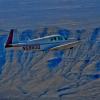High Climb Out Oil Temps
-
Members Online
- JTR
- Schllc
- PT20J
- Echo
- Danb
- eman1200
- 00-Negative
- Robert C.
- Fysiojohn
- filiperosa
- DXB
- MatthiasArnold
- KLRDMD
- Lax291
- Fix
- MikeOH
- vorlon1
- chrisburdzy98
- 47U
- Jsno
- Gee Bee Aeroproducts
- exM20K
- philiplane
- FoxMike
- Rick Junkin
- natdm
- PilotX
- MB65E
- V1Rotate
- hubcap
- MattD89
- Meshach
- 201Mooniac
- hammdo
- Jim Peace
- Oscar Avalle


Recommended Posts
Join the conversation
You can post now and register later. If you have an account, sign in now to post with your account.